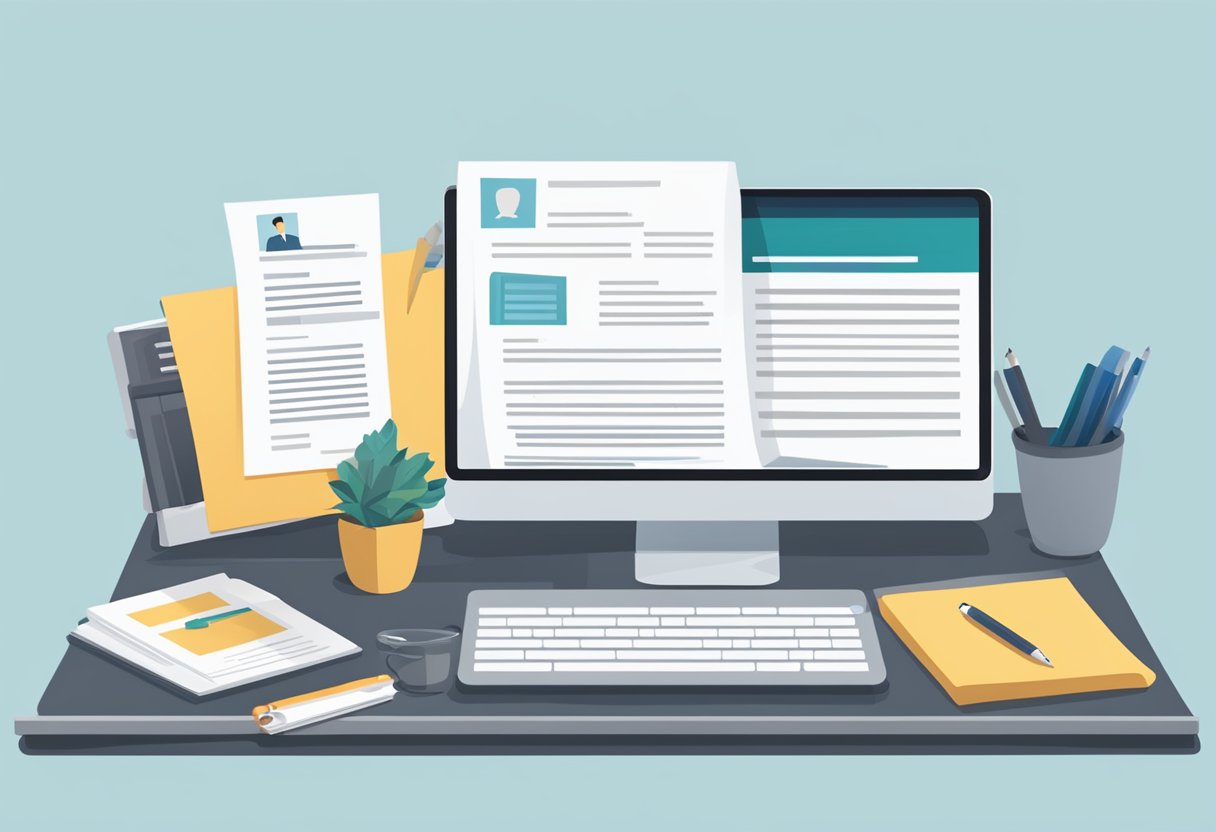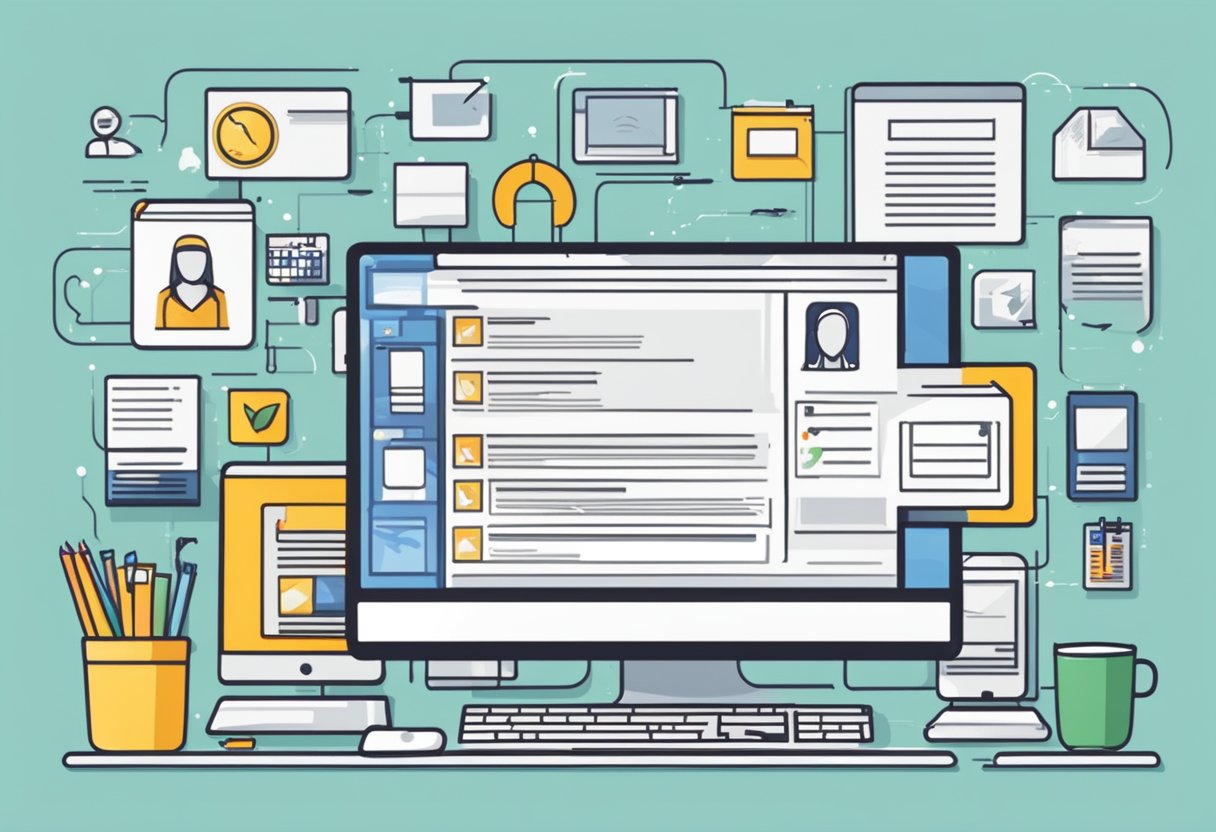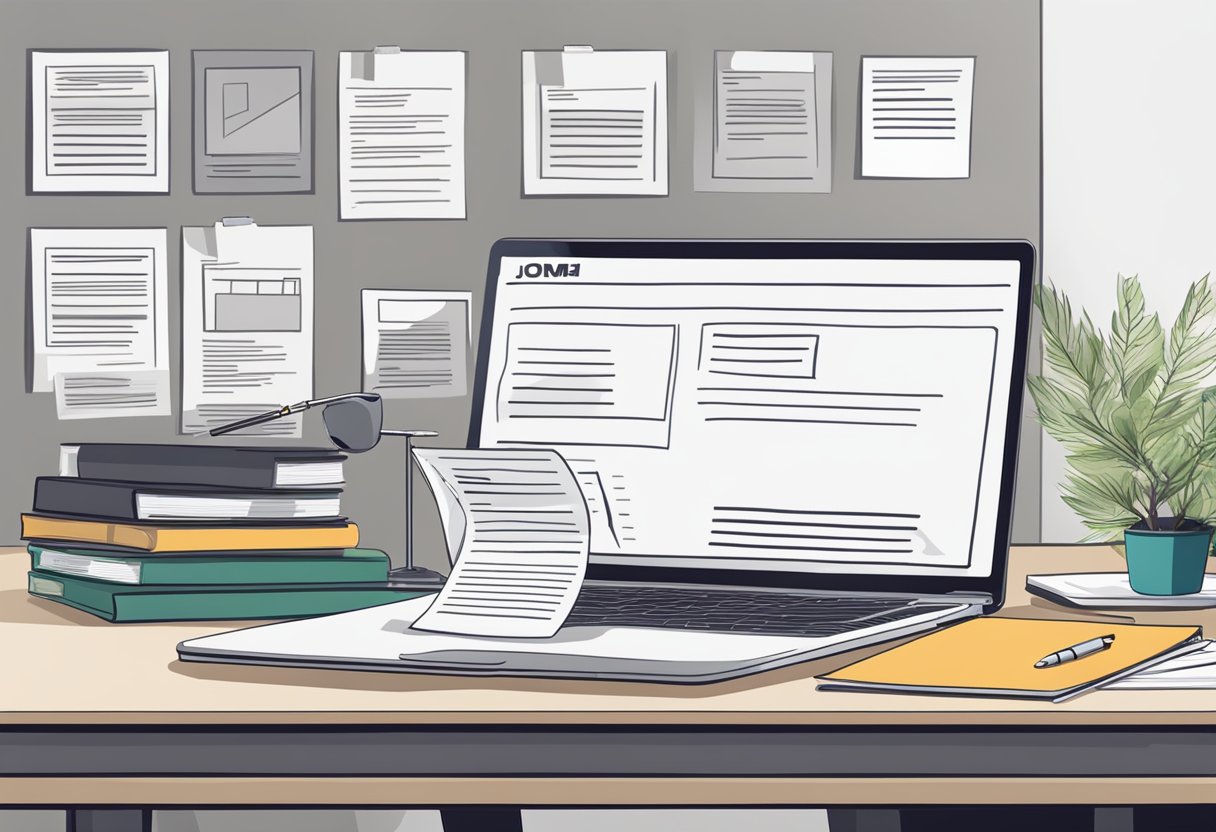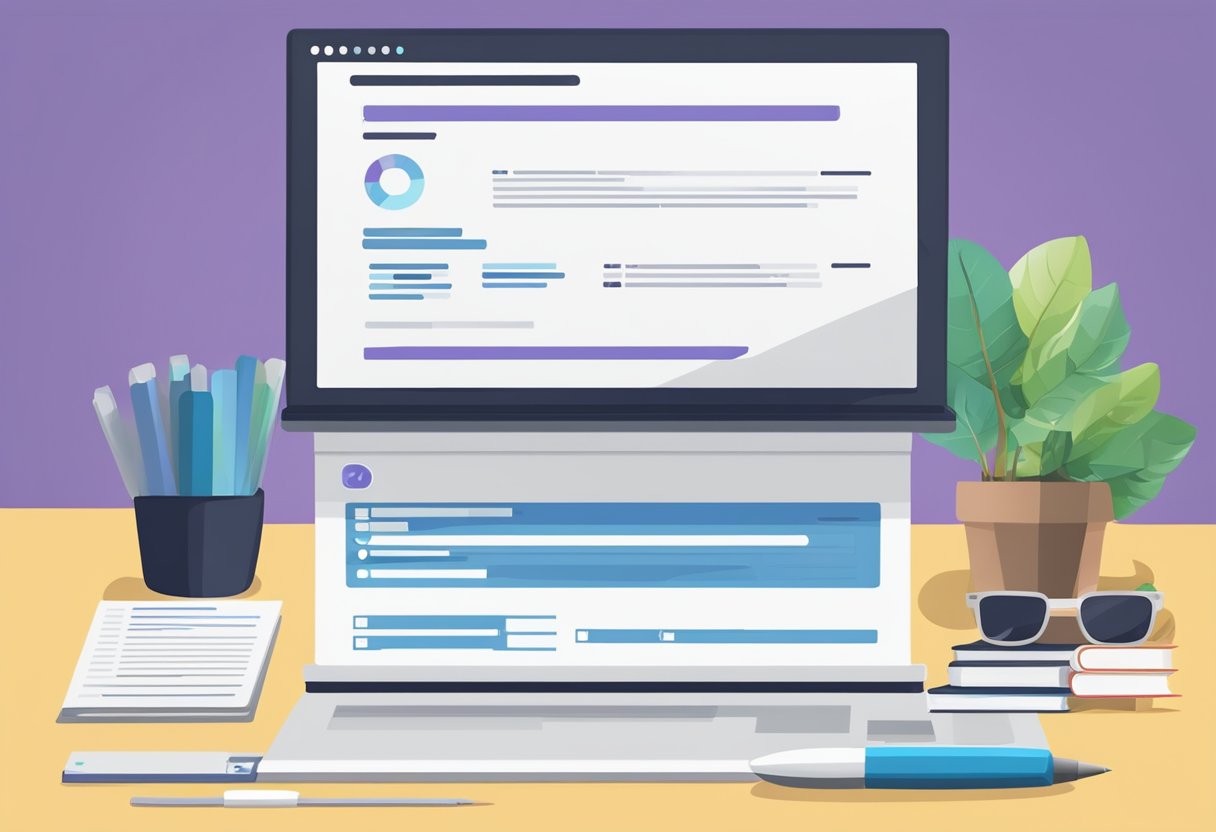How to Make a Resume: Crafting Your Professional Story
Crafting a standout resume can seem like a formidable task, yet it is a critical step in the job search process. A well-constructed resume serves as a professional snapshot, spotlighting a candidate's skills, experience, and value they bring to potential employers. It's the tool that first captures an employer's attention and could potentially lead to an invitation for an interview. Understanding the purpose and components of a resume is essential in today's competitive job market.

The process of making a resume involves several important steps: gathering pertinent information, selecting the right format, and tailoring the content to the job being applied for. A chronological, functional, or combination resume format may be chosen depending on the individual’s work history and the position desired. Each choice has different advantages and focuses on various aspects of one's professional journey. Clear and concise writing paired with a layout that enhances readability can make a significant difference.
Key Takeaways
- A resume is a pivotal tool for making a strong first impression on potential employers.
- Choosing the appropriate resume format and structure is crucial for presenting one's background effectively.
- Customizing content for each job application enhances a resume's impact.
Understanding the Purpose of a Resume
Before crafting a resume, it's crucial to recognize its function as a bridge connecting job seekers to potential employers, providing a critical first impression.
Defining a Resume
A resume is a formal document that canvasses an individual's professional background. This includes their work experience, skills, education, and notable achievements. It’s crafted to present one's qualifications in a concise and structured manner, with the intent of showcasing suitability for a job or career opportunity.
The Importance of a Resume for Job Search
For job applicants, a resume is the primary tool for landing an interview. It serves as a snapshot of a candidate's professional journey, allowing employers to quickly assess the fit between the job requirements and the applicant's credentials. A well-prepared resume demonstrates a job seeker's serious intent and professionalism, significantly influencing their chances of advancing in the job selection process.
Preparing to Write Your Resume
Before one begins the resume writing process, it is essential to lay the groundwork. This preparation ensures that the resume will be tailored effectively to one's experience and the desired positions.
Identifying Your Skills and Accomplishments
It is important for individuals to reflect on their professional journey and make a list of their key skills and significant achievements. Skills should be categorized as either hard skills—specific, teachable abilities like software proficiency or language fluency—or soft skills such as leadership and communication. Achievements might include awards, successful project outcomes, or any measurable impact one has had in their roles.
Knowing Your Audience
Understanding the prospective employer and the industry is crucial. One should research to discover the most valued skills in their field, and tailor the resume to meet the expectations of the employer's corporate culture. This includes using industry-specific terminology and highlighting experiences that align with the job description from the role directly from the job description.
Gathering Relevant Information
One must collect all necessary personal information—previous job titles, dates of employment, educational history, and any certifications or licenses held. Additionally, one should have the contact details for references on hand. The goal is to create a comprehensive work history that can be easily adapted to suit the resume format chosen, be it a chronological, combination, or functional resume.
Structuring Your Resume

In crafting a resume, attention to structure is crucial. It shapes the first impression and guides the employer's focus. The structure encompasses choosing a format tailored to one's experience and the judicious design of the layout.
Choosing the Right Resume Format
Selecting an appropriate resume format is pivotal. There are three primary formats: Chronological, Functional, and Combination. A chronological resume spotlights a candidate's work history, listing experiences from most recent to oldest. It works well for individuals with a strong, continuous employment record. The functional resume focuses on skills and is beneficial for those with gaps in employment or changing careers. Lastly, a combination resume merges these two styles, emphasizing both skills and employment history, suitable for individuals with diverse skill sets and experiences.
Resume Layout and Design Basics
The layout and design of a resume must be professional and easy to navigate. It should feature a clean, consistent font and make use of bold and italic typographic styles to differentiate between section headings and content. Each section should be clearly marked, usually with H3 headings, and the information must be laid out in a logical order. Margins should generally be set to one inch on all sides to ensure a neat appearance. Bullet points are recommended to succinctly present achievements and responsibilities. A beneficial layout strategy can be found in resources like Resume Genius's guide, which details the parts of the resume in the chosen format to highlight the most compelling aspects of a professional background.
Writing Compelling Content

Creating a standout resume involves more than listing your experiences and education—it requires strategic presentation and persuasive language that captures your professional journey effectively. A successful resume must be coherent and compelling to differentiate you from the competition.
The Art of Crafting a Professional Summary or Objective
A Professional Summary or Objective acts as your personal pitch, succinctly presenting your career goals and highlighting the attributes that make you an excellent candidate. It should align with the job you’re applying for, using precise language and action verbs. For executive-level positions, a well-written professional summary illustrates one's leadership philosophy and core competencies, while an objective can be especially beneficial for those entering the workforce or changing careers, focusing on their enthusiasm and transferable skills.
Describing Your Work Experience
Work Experience is the heart of your resume. Each job listing should start with the position title, employer name, and dates of employment, followed by a bulleted list of your responsibilities and achievements. Use quantifiable results such as “increased sales by 20%” to create a powerful narrative of your impact. Select responsibilities that align with the job you're targeting, and always prioritize relevance over the volume of content.
Detailing Your Education
Your Education section must include degrees obtained, institutions attended, and graduation dates. If you’ve graduated recently or if your education is particularly relevant to the job, you may include your GPA, especially if it is high. For those with more work experience, this section might be brief, summarizing only the highest level of education attained.
Highlighting Skills and Certifications
This subsection speaks to your Skills and Certifications which can set you apart as a candidate. A table format can be useful here to cleanly organize technical skills, languages, and professional certifications relevant to the job. For instance:
| Skills | Certifications |
|---|---|
| Data Analysis | PMP Certified |
| Advanced Coding | Cisco Certified |
| SEO Optimization | Six Sigma Green Belt |
Each skill and certification should directly relate to the job description, ensuring that they support your professional experience and educational background.
Customizing Your Resume

Customizing your resume is crucial in making a compelling case for why you are the best candidate for the job. It demonstrates to the employer that you have taken the time to understand the requirements and have the skills they are seeking.
Tailoring for the Job Description
He or she should carefully read the job description and adjust the resume to reflect the most relevant experiences and skills. For instance, if the job requires customer service expertise, one should highlight their past roles and achievements in customer service prominently. An effective approach could be to use bullet points for clear and concise presentation of one's professional history, aligning with the job’s requirements.
Incorporating Keywords
Keywords are vital because many companies use Applicant Tracking Systems (ATS) to screen resumes before they're seen by a person. These keywords should be industry-specific terms and skills mentioned in the job listing. He or she can integrate these keywords throughout their resume in the skills section, work experience, and even in the summary or objective statement, ensuring alignment with what the employer is searching for. For better visibility, italics can be used for emphasis on particularly important keywords.
Finalizing Your Resume

Finalizing a resume is a crucial step to ensure it's polished and ready for potential employers. One must carefully proofread and solicit feedback before considering the document complete.
Proofreading and Editing
Proofreading is essential to catch grammatical errors, typos, and formatting inconsistencies. An error-free resume demonstrates attention to detail, a highly valued trait among employers. It's important to:
- Check spelling and grammar: Use tools like spellcheck and then read through manually to catch elusive mistakes.
- Examine formatting: Ensure fonts, headings, and bullet points are consistent throughout the document.
Getting Feedback
Obtaining feedback from trusted peers or mentors can provide valuable insights. They may notice areas that could be clearer or suggest improvements you hadn't considered. Consider these steps:
- Select appropriate reviewers: Share your resume with individuals who understand your industry and have experience hiring.
- Incorporate constructive criticism: Evaluate all the feedback and make revisions where necessary, prioritizing clarity and relevance.
Frequently Asked Questions

Crafting an effective resume is a key step in the job search process. This section addresses common inquiries with direct answers and practical advice.
What are the essential steps to writing a resume?
A resume typically starts with choosing the right format and layout to suit one's professional background. Candidates should focus on aligning their skills and experience with the job requirements.
How can a student create a compelling resume?
Students should highlight academic achievements, relevant coursework, volunteer work, extracurricular activities, and any internships that demonstrate transferable skills and a strong work ethic.
What should someone include in a resume when they have no job experience?
Individuals without job experience can focus on educational milestones, volunteer experiences, internships, and skills that are relevant to the job they are applying for. Emphasizing soft skills and potential can be persuasive.
What are some free tools or resources for building a professional resume?
There are various free templates and tools online that offer guided instructions and pre-designed formats to help create a professional-looking resume without any cost.
Can you provide a guide for crafting a resume for a first-time job seeker?
First-time job seekers should start their resume with a clear objective or summary, then list educational achievements, relevant skills, and any part-time work, volunteer positions, or internships.
What are effective strategies for enhancing a resume at the age of 16?
At 16, individuals can strengthen their resume by including leadership roles in school clubs, sports teams, community service, and any part-time jobs that demonstrate responsibility and commitment.

Get a higher quality resume format
Our Resume Builder ensures best practices, logic, formatting standards and job matching opportunities from thousands of job boards and portals around the world.
By clicking Start Your Resume, Your are agree to our Terms of use and Privacy Policy
 India's
premier resume service
India's
premier resume service






